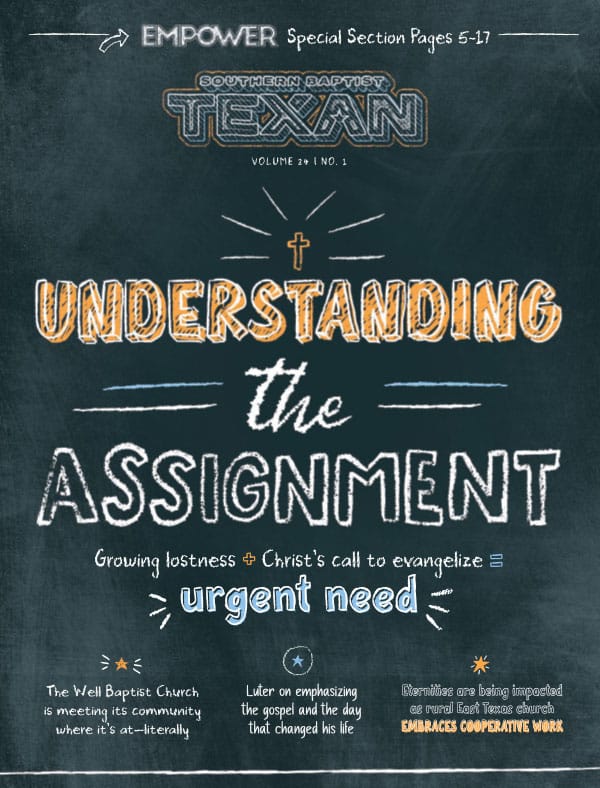HOUSTON–National pro-life events scheduled for late September through the first of November are taking on more significance for right-to-life advocates in Houston as Planned Parenthood continues construction of what could become the largest abortion clinic in North America, some say the world.
“The first time I saw Planned Parenthood in Houston I thought, ‘Oh, my goodness. This is overwhelming,'” said Sonny Foraker, pastor of First Baptist Church Pearland.
The city of Houston, he said, has more abortion clinics than the entire state of South Carolina, where he pastored before coming to Pearland. The newest Planned Parenthood office will replace the main offices of Planned Parenthood of Houston and Southeast Texas on Fannin Street in downtown Houston. Formerly the home of Sterling Bank at 4600 Gulf Freeway, the seven-story building has one floor reserved for abortions and another wing that will facilitate late-term abortions, Houston pro-life organizers say.
Christine Melchor of Houston’s Coalition for Life said in a January interview she had viewed the blueprints for the facility and said plans include an ambulatory unit as required by state law to perform abortions past 19 weeks of gestation. Melchor said such procedures used to be done at the Fannin address until a 2003 state law required late-term abortions be performed in a facility with an ambulatory unit. The new Planned Parenthood offices will meet that standard, she said.
Foraker, whose efforts helped close nine of 12 abortion clinics in South Carolina, said he is urging pro-lifers to counter the abortion industry’s influence by speaking out and by volunteering at a pregnancy resource center (PRC). At the very least, he urged, people can give money to the PRCs that seek to end abortion and minister to the women dealing with its aftermath.
“They [PRCs] are leading more men and women to Christ than some churches,” he said.
Events such as “40 Days for Life” and “Life Chain” are non-confrontational ways in which the Christian community can educate others about abortion and minister to those who see the life-ending procedure as their only recourse.
“We know we are having a great impact,” said Christine Kasper, programs coordinator for the Houston Coalition for Life.
The organization is directing the efforts for this year’s 40 Days for Life that began on Sept. 23. The prayer vigils will last from 6:30 a.m. to 6:30 p.m. each day except Sunday outside the main offices of Houston Planned Parenthood, 3601 Fannin (The home page of the Planned Parenthood of Houston website refers to the prayer vigil as “40 Days of Harassment” and calls for volunteer escorts to help clients get past the “protestors” who are “handing out false information and offering free ‘services’ at clinics that don’t believe in birth control or have medical professionals on staff.”)
The services to which the Planned Parenthood website refers is the Pregnancy Resource Center around the corner from the abortion clinic. Kasper said for the last two 40 Days for Life events, the center has kept a tally of the women who come to the facility seeking an alternative to the abortion they were prepared to have before speaking with pro-life volunteers. Kasper said that in fall 2008, 34 women referred to the PRC chose to keep their babies. In the spring 2009, 14 made the same decision.
“That’s 48 living babies … if it hadn’t been for the 40 Days of Life,” she added.
Because they cannot get on Planned Parenthood’s property, those praying and offering counsel must try to draw the women to them with smiles, friendly waves, and letting the women know the group represents caring Christian people.
“We want to be the opposite of what Planned Parenthood is telling them we are,” Kasper said.
Although few Planned Parenthood clients leave the sides of the escorts to the abortion clinic, some will as evidenced by the number of women who visited the PRC around the corner. Most are determined to follow through with the abortion, but not all.
“I think we’re really there for a reason,” Kasper said. “We’re there for those [women] reaching out for help looking for someone to save them.”
Kasper said she is convinced there are women who, though they are walking into an abortion clinic to end the life of their unborn baby, are frantically looking for someone to talk them out of it.
Sharron Albertson with Texas Life Chain said just making a silent public statement of faith about the need to end abortion has spared the lives of unborn children and brought conviction and healing to those who have participated in abortion.
This year’s Life Chain was scheduled for Sunday, Oct. 4.
The influence of such an event is hard to quantify but the stories of lives touched has been witnessed by Albertson or passed on by other prayer partners in the ministry. She said last year she was struck by the reality of the often forgotten casualty of abortion—men.
Albertson, who coordinates the Texas Life Chain as well as the chains in Dallas, recalled an incident relayed to her where a man driving past those praying and lifting up signs reading “Jesus Forgives and Heals,” “Abortion Hurts Women,” pulled over and put his head down on the steering wheel and began sobbing.
More information is available at 40daysforlife.com or in Houston at houstoncoalition.com.
Foraker said hitting the wallets of Planned Parenthood and those who do business with the largest abortion provider in the nation is a very effective way to slow if not halt construction on the new Houston facility. Many of the construction workers at the site are not pro-choice, said Foraker who regularly visits the location and speaks with contractors as time and trespassing restrictions allow.
“Many,” he said, “don’t like what they are doing.”
A list of contractors working on the Planned Parenthood facility can be found at texasfamilies.org.










